The first day we moved into our new house in N. Phoenix, AZ, we noticed a plant on the side of our yard that had dark, rather large, green leaves with tubular white flowers; also large. We had no idea what this was, but it was an impressive looking plant.
I have certain criteria for growing plants and one of them is the size of the flower in relationship to the size of the plant and leaves. I want a plant to offer color or a unique presentation. There are times when a plant provides other reasons for cultivation such as unique form, colorful leaves, etc., but I digress.
After doing a bit of research we found out that this plant was a native Datura or Jimson Weed.
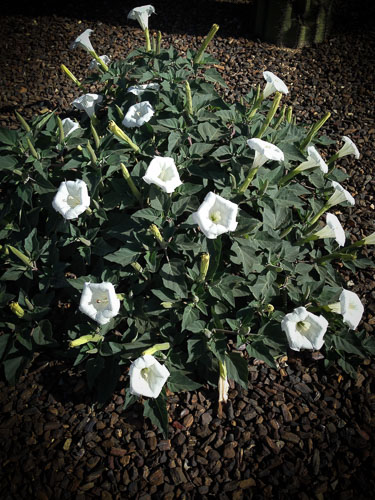
The plant pictured above isn’t the original plant, but it is a native Datura we grew from seed. As you will note it is rather large.
Here is a picture of a couple of the flowers in bloom.
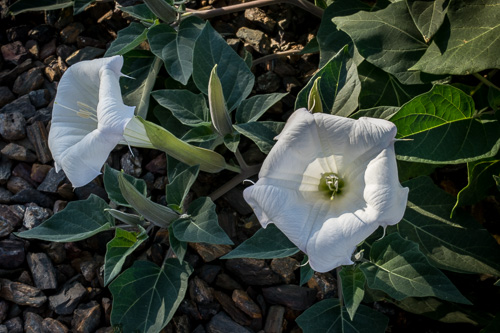
The flowers open in the evening because their natural pollinator is a Hawk moth which is out and about during the late afternoon and evening hours.
A close up of a single flower shows how inviting this might be for a moth or other pollinators such as bees. Every morning there are bees visiting the flowers to gather whatever pollen they can. The Hawk moth prefers the nectar and it has been noted by others that some of the moths seem to be a bit “high” as the Datura has hallucinogenic properties. Read more about that HERE.

While this particular specimen is very white, I have seen others that have purple-to-pink tinges and, if my memory serves me correctly, I think one had purple stripes in the throat.
One of the positive characteristics of this plant from a gardeners point of view is that the mammals living in our yard, i.e. rabbits, squirrels, mice, packrats, javelina, etc. tend to leave it alone.
One of my favorite forms of the flower, because of its beautiful and unique form, is the swirled bud shape that it assumes the day before it opens.
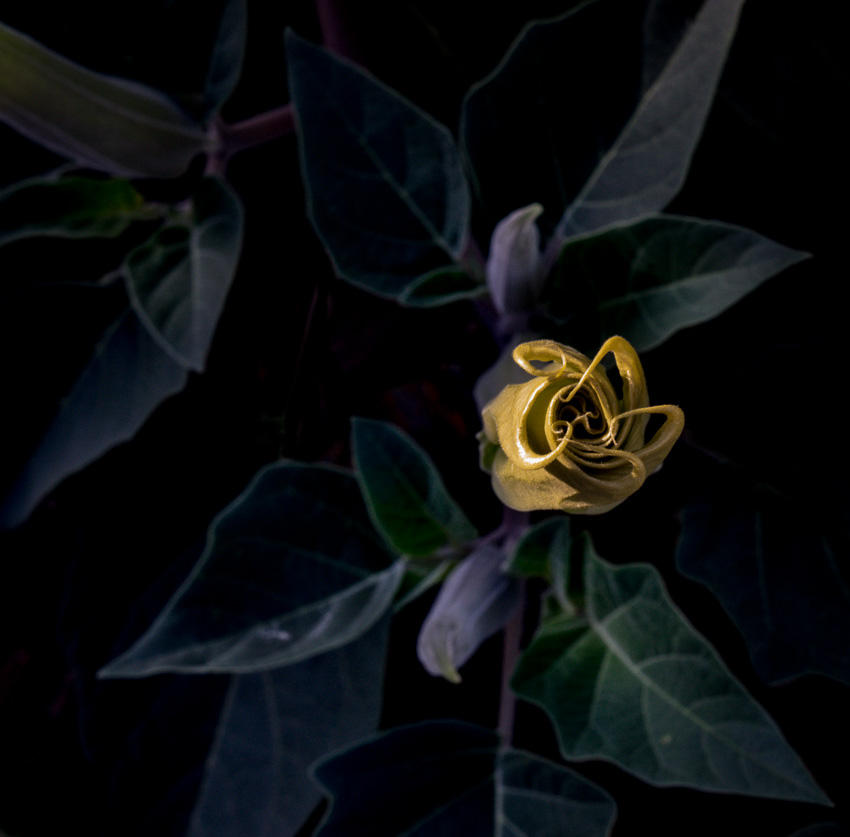
This particular plant wasn’t this robust its first year, but with every subsequent year, it has gotten larger and larger. The seed of this plant was harvested from a sprawlingly huge specimen. Now that it seems to have taken hold, we anticipate that it will remain a sturdy perennial.
This spring, once the blooms began to mature, I have been greeted with a dozen or more flowers nearly every morning. The flowers only last a few hours after daybreak and with the heat of the Arizona desert sun, this bloom interval will shorten.
I remove the spent blooms each morning and create a “dead head” bouquet.
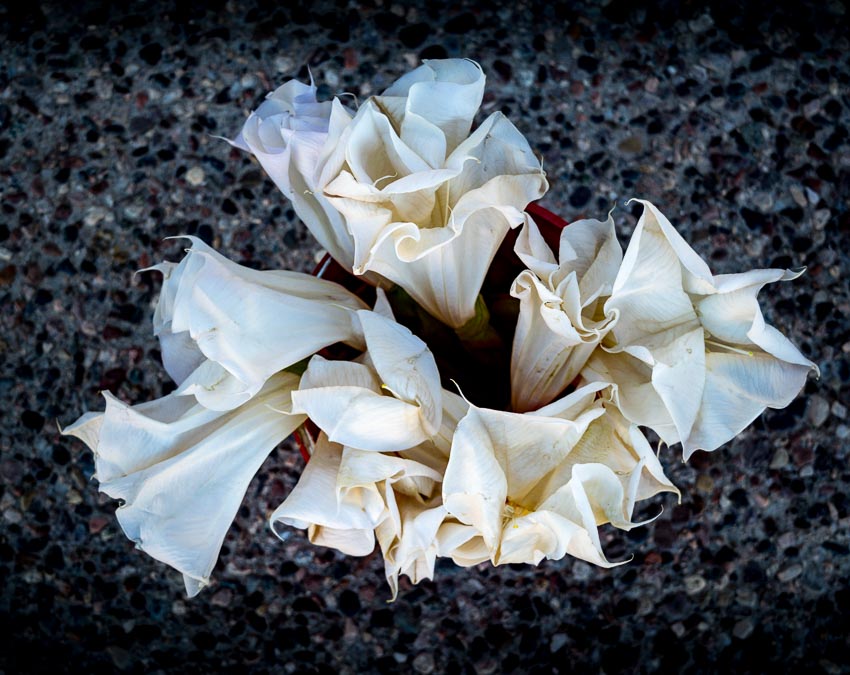
This seems to extend the bloom time by preventing the formation of the prickly seed pods.
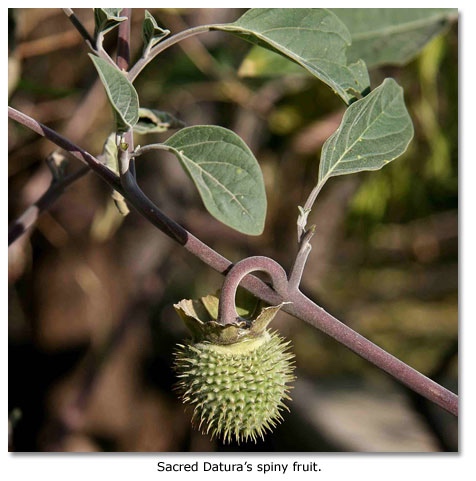
Photograph courtesy of www.desert.usa.com
If you live in an arid area with the appropriate temperature range and you would like to grow an interesting plant that is mostly pest free, I think the Datura would be a good candidate.